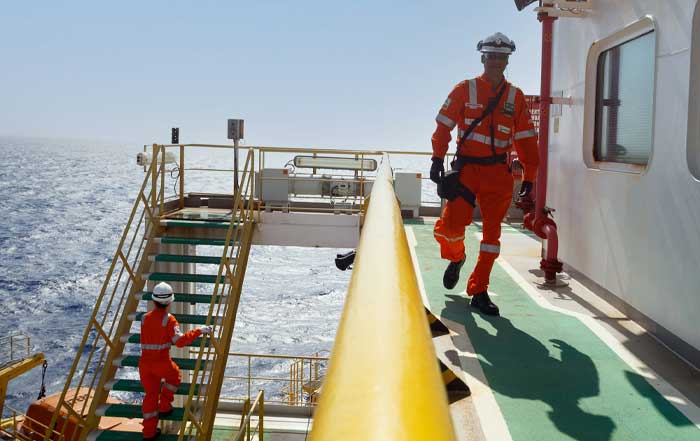In the fast-paced world of entrepreneurship, time is the most valuable and non-renewable resource. Every business owner, from startup founders to established executives, faces the challenge of balancing operational priorities, growth strategies, and personal well-being. As digital transformation accelerates and hybrid work models redefine business culture, mastering time management has become not just a productivity tactic but a strategic advantage. Effective time management enables business leaders to make better decisions, sustain creativity, and ensure that every hour contributes to long-term success.
For entrepreneurs navigating multiple demands, adopting structured time management habits can transform chaos into clarity. This article explores twenty proven strategies tailored for modern business owners—methods that integrate technology, mindset shifts, and disciplined routines to maximize productivity and sustain performance across a rapidly changing global economy.
1. Define Strategic Priorities with Clarity
Every successful business begins with clear priorities. In 2025, where distractions are abundant and information is constant, defining what truly matters is the foundation of effective time management. Business owners should align their daily activities with long-term strategic objectives, ensuring that every task contributes to measurable outcomes.
By adopting strategic frameworks like OKRs (Objectives and Key Results) or SMART goals, entrepreneurs can transform abstract ambitions into actionable plans. Tools such as Notion and Asana help visualize these priorities, allowing leaders to allocate time based on impact rather than urgency.
Learn more about business leadership strategies at tradeprofession.com/business.html.
2. Master the Art of Delegation
One of the defining skills of an effective business owner is delegation. Micromanagement not only limits organizational growth but also drains valuable mental energy. Empowering team members with responsibility fosters trust and accountability while freeing time for high-level strategy and innovation.
Platforms like Trello or Monday.com make delegation transparent and trackable, allowing business owners to focus on their core competencies—whether in product innovation, client relations, or financial planning.
Executives can enhance delegation efficiency by understanding employee strengths, creating role-based accountability, and maintaining open communication channels.
For insights into executive leadership development, explore tradeprofession.com/executive.html.
3. Implement the 80/20 Rule (Pareto Principle)
The Pareto Principle asserts that 80% of results often stem from 20% of activities. This principle remains a timeless time management strategy, particularly relevant in 2025’s competitive global markets. By identifying high-impact activities—such as nurturing top clients or refining core products—business owners can reduce time spent on low-value tasks.
Regular performance audits can reveal which processes generate the most significant outcomes. Modern analytics tools like Google Workspace Insights or HubSpot CRM provide clear data on where time and resources yield the highest returns.
Learn more about productivity-focused business innovation at tradeprofession.com/innovation.html.
4. Schedule Deep Work Sessions
Coined by author Cal Newport, deep work refers to focused, distraction-free periods dedicated to cognitively demanding tasks. For entrepreneurs managing multiple responsibilities, protecting blocks of time for deep work can be transformative.
Business owners can schedule two to three-hour segments daily for strategic planning, financial analysis, or creative problem-solving. Using tools like Focus@Will or RescueTime, leaders can monitor focus levels and eliminate unnecessary distractions.
Explore how digital focus tools enhance productivity at tradeprofession.com/technology.html.
⏰ Time Management Hub
Master your schedule with 20 proven strategies for business success
Define Strategic Priorities
Align daily activities with long-term objectives using OKRs and SMART goals
Master Delegation
Empower your team and free time for high-level strategy and innovation
80/20 Rule (Pareto)
Focus 80% of effort on the 20% of activities that drive results
Schedule Deep Work
Block 2-3 hour segments for focused, distraction-free cognitive work
Leverage AI Tools
Automate repetitive tasks with AI assistants and smart scheduling
Time Blocking
Structure each day into defined segments for specific focus areas
Digital Dashboards
Monitor performance metrics in real-time to accelerate decisions
Outsource Non-Core
Delegate administrative tasks to external professionals
Automate Workflows
Streamline processes with Zapier, Make.com, and automation tools
Prioritize Health
Maintain mental clarity and energy through wellness practices
Limit Meetings
Set clear agendas and replace unnecessary meetings with async comms
Decision Frameworks
Use Eisenhower Matrix or RAPID to avoid analysis paralysis
Set Boundaries
Protect personal time to prevent burnout and maintain focus
Batch Similar Tasks
Group related activities to reduce context switching
Time Audits
Regularly analyze time usage to identify inefficiencies
Remote Work Tools
Enable seamless collaboration across distributed teams
Strategic Downtime
Schedule rest periods to enhance creativity and decision-making
Communication Systems
Structure protocols to reduce misunderstandings and save time
Continuous Learning
Invest in education to improve future efficiency and skills
Long-Term Vision
Align daily actions with overarching company mission
What's Your Time Management Style?
Discover which strategy fits you best
Your Time Management Profile:
⏱️ Weekly Time Savings Calculator
🗺️ 90-Day Implementation Roadmap
Week 1-2: Foundation
Define strategic priorities, conduct time audit, and identify high-impact activities using the 80/20 rule
Week 3-4: Systems Setup
Implement time blocking, set up digital dashboards, and establish decision-making frameworks
Week 5-6: Automation
Integrate AI tools, automate repetitive workflows, and begin outsourcing non-core tasks
Week 7-8: Team Alignment
Master delegation, streamline communication systems, and reduce unnecessary meetings
Week 9-10: Deep Work
Schedule dedicated deep work sessions, implement task batching, and optimize focus periods
Week 11-12: Sustainability
Set work-life boundaries, prioritize health routines, and plan strategic downtime for creativity
Month 4+: Optimization
Regular time audits, continuous learning investment, and refining systems based on results
5. Leverage AI for Time Optimization
Artificial intelligence has revolutionized productivity tools. In 2025, AI assistants like Microsoft Copilot, ChatGPT Enterprise, and Notion AI automate repetitive tasks such as email responses, meeting scheduling, and data reporting. These tools analyze work habits to suggest optimal task sequencing and workload balance.
For instance, AI-driven scheduling software such as Clockwise dynamically adjusts calendars based on task priorities and meeting fatigue. Business owners adopting AI systems can save several hours weekly, redirecting their energy toward innovation and decision-making.
Discover how AI transforms professional efficiency at tradeprofession.com/artificialintelligence.html.
6. Apply Time Blocking Techniques
Time blocking structures each day into defined segments dedicated to specific tasks. Unlike a standard to-do list, it creates a visual commitment to focus areas—sales, strategy, administration, and rest.
By assigning precise time slots to activities, entrepreneurs prevent reactive scheduling and reduce multitasking. Calendar systems like Google Calendar and Outlook 365 can integrate time-block templates, ensuring leaders maintain balanced work routines.
Effective time blocking also includes buffer zones to manage unexpected challenges—an essential component in industries where unpredictability is the norm.
7. Use Digital Dashboards for Performance Monitoring
Data transparency improves time efficiency. Dashboards consolidating financial, operational, and marketing metrics give entrepreneurs a real-time view of business health. This eliminates unnecessary meetings and accelerates decision-making.
Platforms like Tableau, Google Data Studio, or Zoho Analytics offer customizable visual dashboards that summarize performance indicators. When leaders can instantly assess progress, they reduce the time spent on manual reporting and improve overall responsiveness.
Learn more about analytics integration for business growth at tradeprofession.com/investment.html.
8. Outsource Non-Core Tasks
Outsourcing allows business owners to reclaim time by assigning administrative, technical, or creative tasks to external professionals. Services like Upwork, Toptal, or Fiverr Pro connect companies with skilled freelancers, enabling scalability without permanent headcount increases.
For startups, outsourcing bookkeeping, content production, or customer service can be cost-effective and time-efficient. By focusing internal resources on core operations, organizations enhance agility and profitability.
Read more about sustainable outsourcing practices at tradeprofession.com/sustainable.html.
9. Automate Repetitive Workflows
Automation is a time management catalyst for the digital age. Business owners can streamline workflows by integrating systems through tools like Zapier, Make.com, or Airtable Automations. These platforms connect apps and trigger actions automatically—sending invoices, updating CRM entries, or syncing marketing data without human input.
Automation not only saves time but also reduces human error. In sectors like finance and e-commerce, automated workflows maintain consistent accuracy, ensuring operational reliability even at scale.
Explore business automation trends at tradeprofession.com/technology.html.
10. Prioritize Health and Mental Clarity
Time management is not just about doing more—it’s about sustaining performance. In 2025, entrepreneurs increasingly recognize the link between mental health, physical fitness, and productivity. Research from global wellness organizations highlights that regular exercise, adequate rest, and mindful practices enhance focus and energy.
Apps like Calm, Headspace, and Fitbit Premium help entrepreneurs monitor wellness routines. Prioritizing health ensures that decision-making remains sharp and stress remains manageable, even under high business pressure.
Learn how wellbeing supports long-term leadership effectiveness at tradeprofession.com/personal.html.
11. Limit Meetings to Maximize Output
Meetings often consume a disproportionate share of a leader’s time. Streamlining meetings by setting clear agendas, defined outcomes, and time limits can free hours weekly. Business owners should challenge unnecessary meetings and replace them with asynchronous communication via Slack, Loom, or Microsoft Teams recordings.
Effective leaders also designate specific “meeting-free days,” allowing uninterrupted focus on strategic priorities. This practice has been widely adopted by forward-thinking companies like Shopify and Atlassian, known for their productivity-driven cultures.
12. Implement Decision-Making Frameworks
Time lost to indecision can paralyze business progress. Structured frameworks such as the Eisenhower Matrix or RAPID model (Recommend, Agree, Perform, Input, Decide) streamline choices by clarifying roles and urgency.
By categorizing decisions based on importance and impact, entrepreneurs avoid analysis paralysis and make confident moves faster. Leadership teams benefit from written decision logs, ensuring accountability and institutional learning across projects.
Learn more about strategic decision-making in global business at tradeprofession.com/global.html.
13. Set Boundaries for Work-Life Integration
In the modern era of hybrid work and constant connectivity, setting firm boundaries between personal and professional life is essential for maintaining long-term focus and preventing burnout. Business owners who structure their working hours and consciously disconnect outside of those times report higher productivity levels and greater satisfaction.
Tech entrepreneurs and executives often use scheduling rules such as “no work after 7 PM” or “digital detox weekends.” Tools like Freedom and Digital Wellbeing help monitor and limit device usage, ensuring that business owners can recharge effectively. By setting boundaries, leaders not only protect their time but also model sustainable work habits for their teams.
Explore more about maintaining balance between work and personal growth at tradeprofession.com/employment.html.
14. Batch Similar Tasks Together
Task batching is one of the most effective yet underrated time management strategies. By grouping similar activities—such as responding to emails, approving documents, or making client calls—business owners reduce the cognitive load associated with context switching.
Instead of addressing tasks randomly throughout the day, scheduling dedicated “email hours” or “finance review blocks” enhances concentration and speeds up execution. This approach is especially beneficial for founders juggling multiple roles within their organizations.
Learn how focused task structures enhance business operations at tradeprofession.com/innovation.html.
15. Regularly Audit and Reassess Time Usage
Just as companies conduct financial audits, time audits are equally critical for performance improvement. Entrepreneurs should periodically analyze how their time is spent across categories—management, sales, marketing, administration, and personal growth.
Applications like Toggl Track or Clockify provide real-time analytics that expose inefficiencies and time leaks. Once identified, these inefficiencies can be mitigated through delegation, automation, or elimination of non-essential tasks. Continuous reassessment ensures that business owners remain aligned with evolving priorities and avoid slipping into unproductive patterns.
For broader insights into efficient management, visit tradeprofession.com/management.html.
16. Embrace Flexible and Remote Work Tools
In 2025, flexibility defines productivity. With global teams distributed across time zones, leveraging advanced collaboration tools ensures seamless coordination and efficient use of time. Platforms such as Zoom, Miro, and Slack provide centralized communication channels that reduce scheduling conflicts and support asynchronous work.
For business owners, adopting flexible structures also allows for broader talent acquisition and improved morale. Remote productivity frameworks emphasize outcomes over presence, ensuring time spent working directly correlates to measurable progress.
Learn more about adaptive work models at tradeprofession.com/global.html.
17. Plan for Strategic Downtime
While traditional management often glorifies busyness, high-performing entrepreneurs recognize the necessity of deliberate rest. Strategic downtime enhances creative thinking and long-term decision-making.
Tech leaders like Elon Musk and Satya Nadella have emphasized the role of rest and reflection in innovation cycles. By scheduling time for reflection, meditation, or creative hobbies, business owners maintain cognitive flexibility and emotional resilience. Regular breaks not only prevent fatigue but also promote breakthrough ideas that drive business evolution.
Read more about the relationship between leadership health and performance at tradeprofession.com/personal.html.
18. Strengthen Communication Systems
Efficient communication reduces misunderstandings, accelerates decision-making, and saves countless hours across a business. In 2025, the proliferation of digital tools requires structured communication protocols.
Leaders must determine which channels to use for which types of communication—project updates on Asana, quick chats on Slack, and formal documentation in Notion. Consolidating communication platforms prevents overlap, miscommunication, and unnecessary follow-ups.
Additionally, clarity in written communication—concise updates, defined next steps, and transparent accountability—ensures that teams operate smoothly even under tight deadlines.
Explore business communication techniques at tradeprofession.com/education.html.
19. Invest in Training and Continuous Learning
Time spent on education is time invested in future efficiency. Business owners who continually update their knowledge in finance, leadership, and digital technologies position themselves for sustainable growth.
Online learning platforms like Coursera, edX, and LinkedIn Learning offer advanced business courses that help entrepreneurs master automation, financial literacy, and organizational psychology. Educated leaders make faster, data-informed decisions that optimize both time and resources.
For more insights on the importance of leadership development, visit tradeprofession.com/education.html.
20. Cultivate a Long-Term Vision
The most effective time managers are those who operate from a clear, long-term vision. By aligning daily actions with overarching company missions, business owners avoid reactive decision-making and unnecessary distractions.
This approach requires regular reflection on purpose and direction. Many global firms conduct quarterly vision reviews, ensuring that short-term actions still contribute to the larger narrative of the organization. When leaders have clarity of purpose, every meeting, project, and conversation becomes part of a unified time management ecosystem.
Learn more about visionary leadership at tradeprofession.com/founders.html.
Integrating Technology and Human Strategy in Time Management
In today’s business ecosystem, time management no longer depends solely on personal discipline—it thrives at the intersection of human focus and digital intelligence. Entrepreneurs now have access to powerful AI-driven platforms that forecast deadlines, recommend schedules, and analyze energy patterns.
For example, Motion, an AI-powered scheduling tool, dynamically adjusts meetings to maintain optimal productivity cycles. Meanwhile, project management platforms like ClickUp integrate with financial dashboards, ensuring that project time translates into profitability. This fusion of automation and insight redefines efficiency by ensuring that no effort goes unnoticed or unmeasured.
Explore related topics on intelligent business tools at tradeprofession.com/technology.html.
Time as a Reflection of Leadership Maturity
Ultimately, how a business owner manages time reflects their maturity as a leader. The ability to balance urgency with patience, delegation with accountability, and ambition with self-care distinguishes sustainable leadership from burnout-driven management. In a digital economy characterized by rapid change, disciplined time management represents both a survival tool and a competitive advantage.
Executives who implement structured daily routines, leverage digital tools, and nurture focused mindsets not only enhance productivity but also foster cultures that value purpose and precision. When leadership demonstrates respect for time, the entire organization follows suit—creating a professional rhythm that drives consistent growth and innovation.
The Global Outlook: Managing Time in a Borderless Business Environment
As business expands across continents, the ability to coordinate across time zones and cultures becomes essential. Globalization introduces complexity in scheduling, communication, and decision-making—but also unlocks opportunities for continuous progress.
Organizations in regions like Singapore, Germany, and Canada have mastered time synchronization using cloud-based coordination tools and culturally aware collaboration practices. In emerging markets such as Brazil and Thailand, flexible work-hour models are redefining the balance between accessibility and autonomy.
The global business environment now demands that entrepreneurs manage not just hours, but also energy, attention, and digital bandwidth. Successful leaders recognize that the future of time management depends on adaptability—integrating automation, remote leadership, and cultural intelligence into one cohesive strategy.
Learn more about international management trends at tradeprofession.com/global.html.
Building a Culture That Values Time
Time management is not an individual effort; it is an organizational culture. When employees see their leaders respecting time—arriving punctually, running efficient meetings, and prioritizing focus—they internalize these values. Over time, this collective discipline compounds into measurable performance gains.
Corporate training programs, productivity seminars, and internal mentorship initiatives can reinforce these habits. Companies like Google, Deloitte, and Airbnb invest in productivity coaching to sustain innovative and balanced workplaces. Creating an environment that rewards efficiency, rather than busyness, ensures that teams maintain clarity and motivation even during demanding growth cycles.
Explore insights into organizational leadership at tradeprofession.com/executive.html.
Future of Entrepreneurial Time Management
As the business landscape continues to evolve through technological innovation and global integration, time remains the one asset beyond control yet fully within management. In 2025, the most successful entrepreneurs are not those who work the longest hours, but those who work with deliberate purpose, clarity, and discipline.
The twenty principles outlined here—spanning delegation, automation, health, and leadership—form the framework of a balanced, high-performance lifestyle. Time management in this new era is about designing systems that reflect priorities, values, and strategic foresight. Entrepreneurs who master this art will find themselves leading not from exhaustion but from empowerment, navigating complex markets with focus, confidence, and renewed energy for growth.










